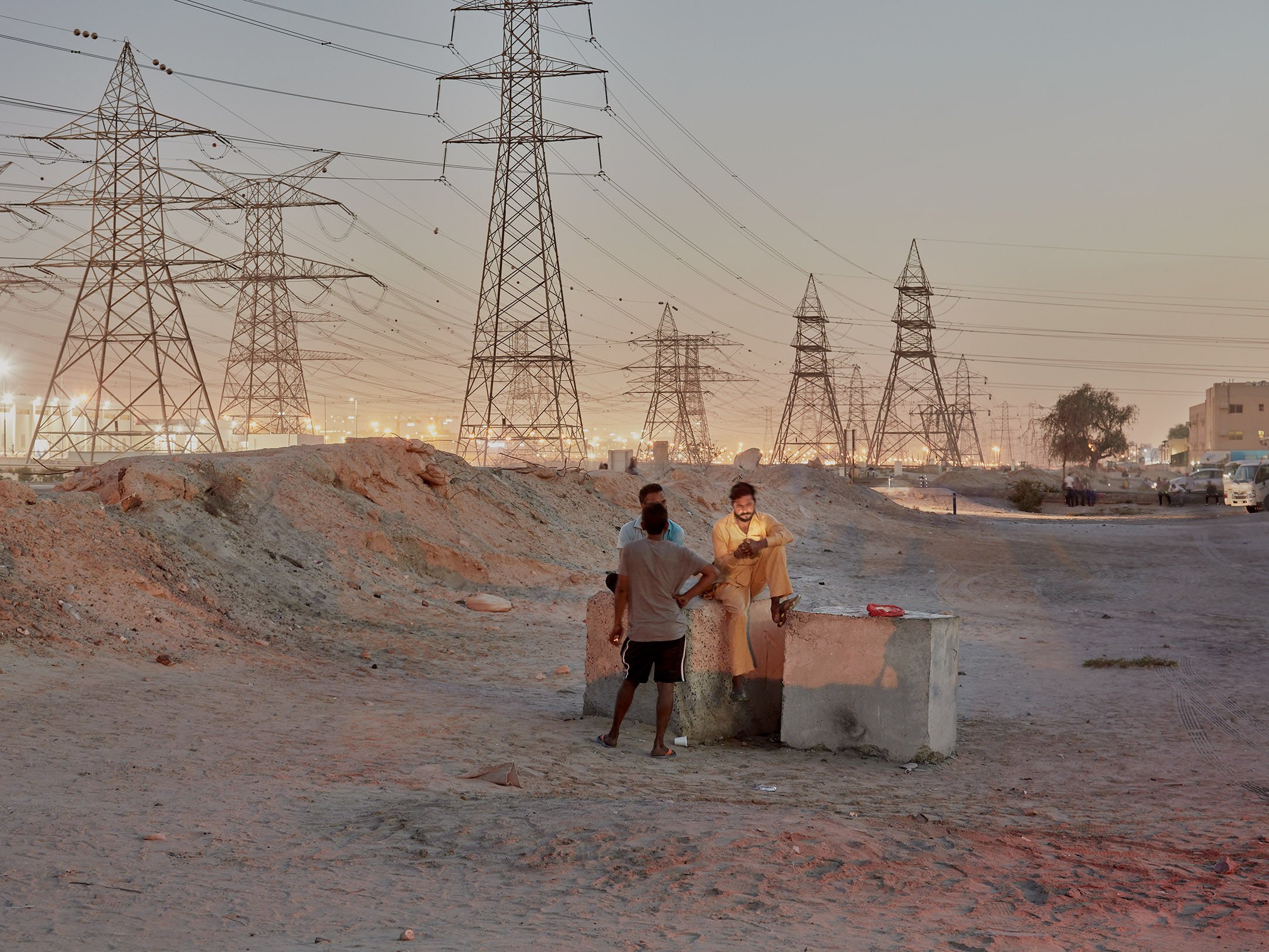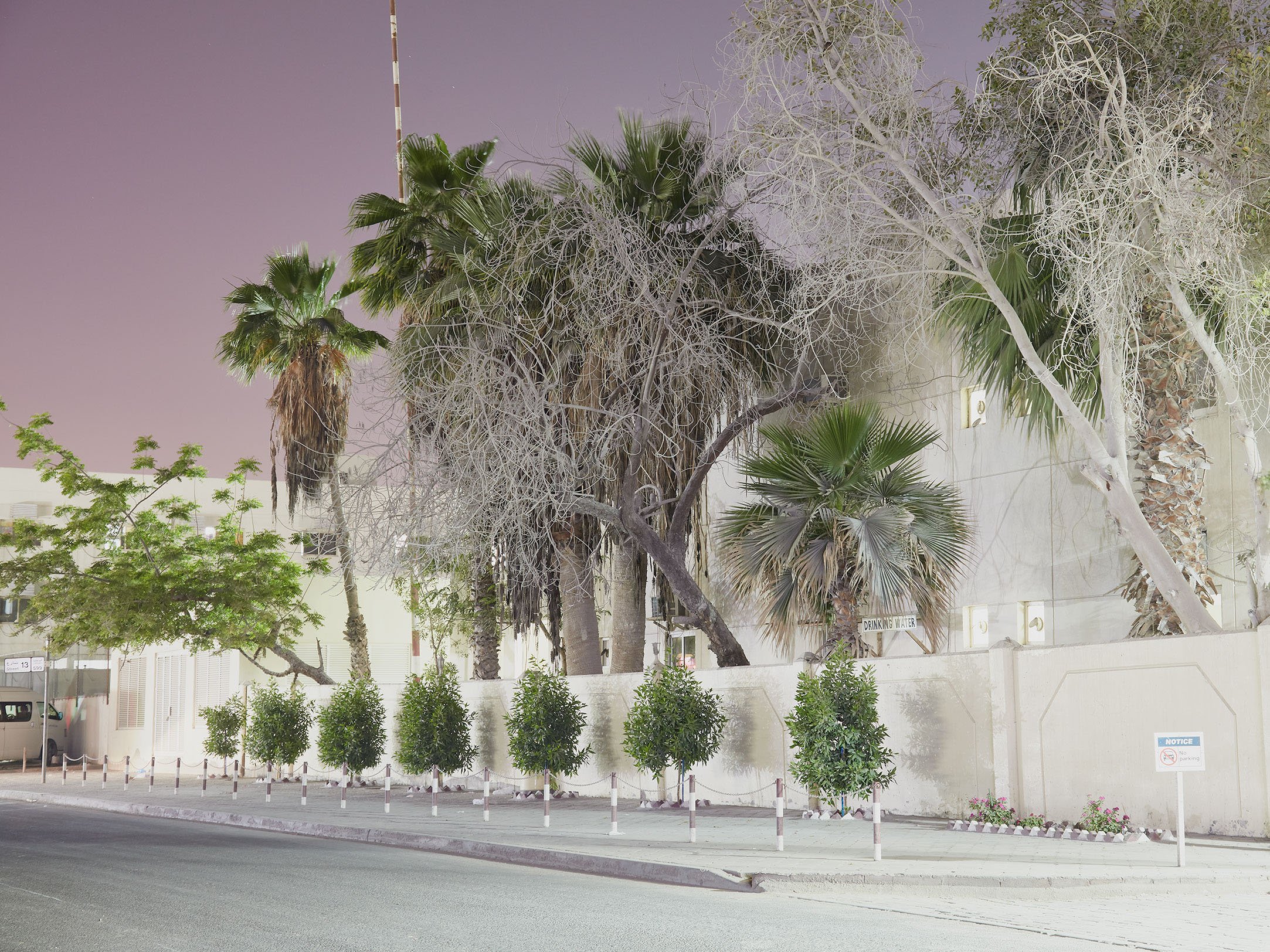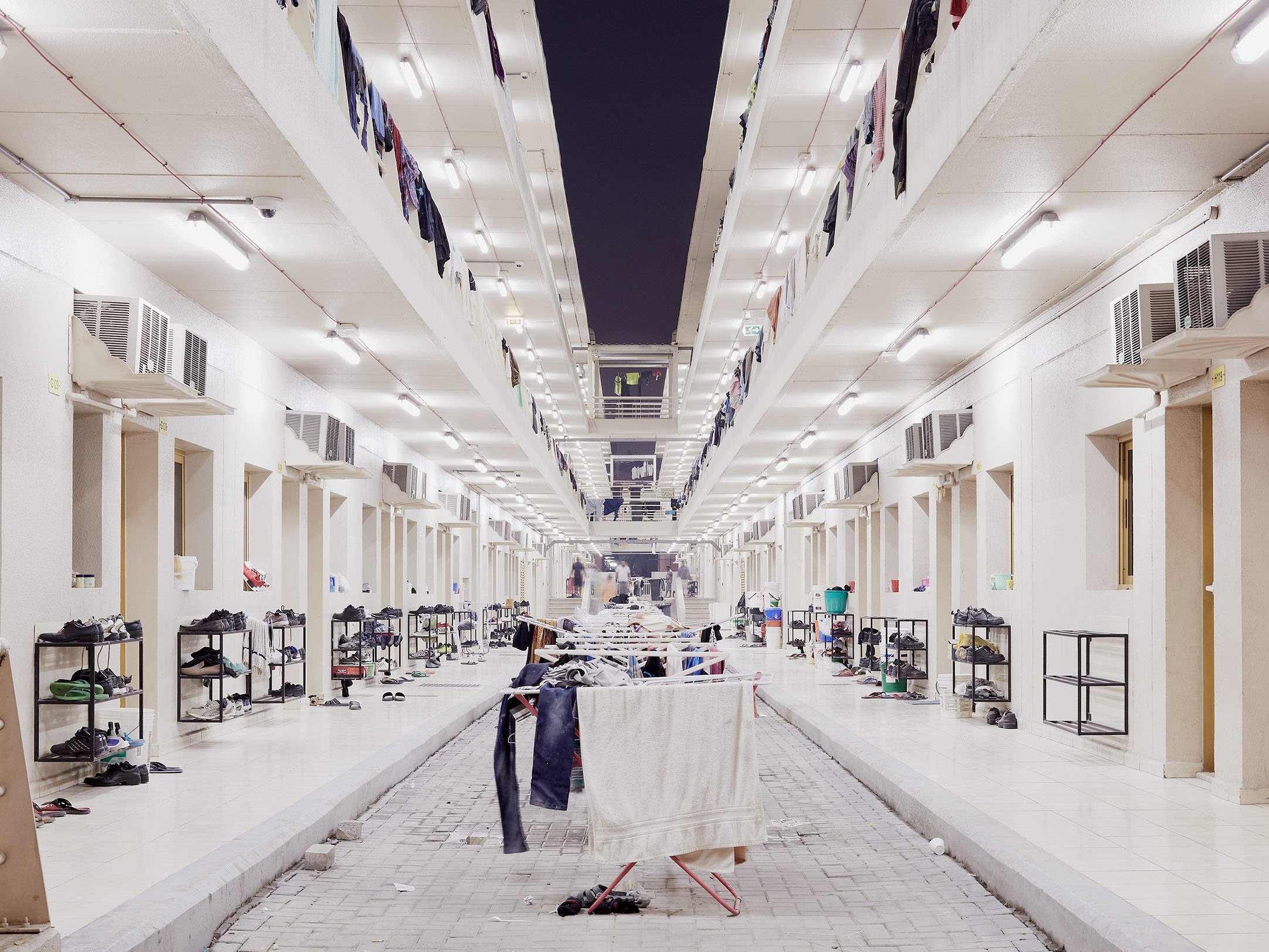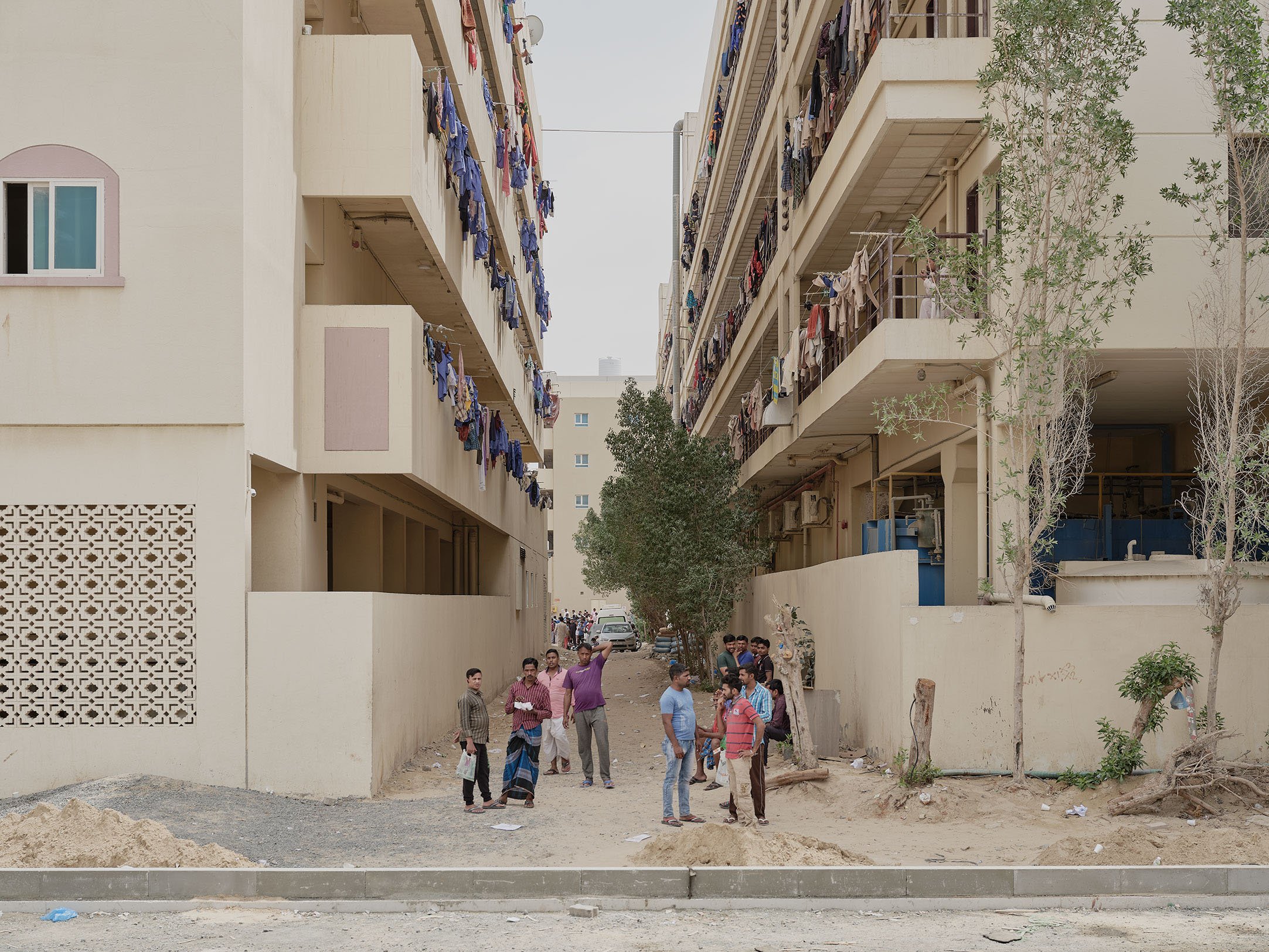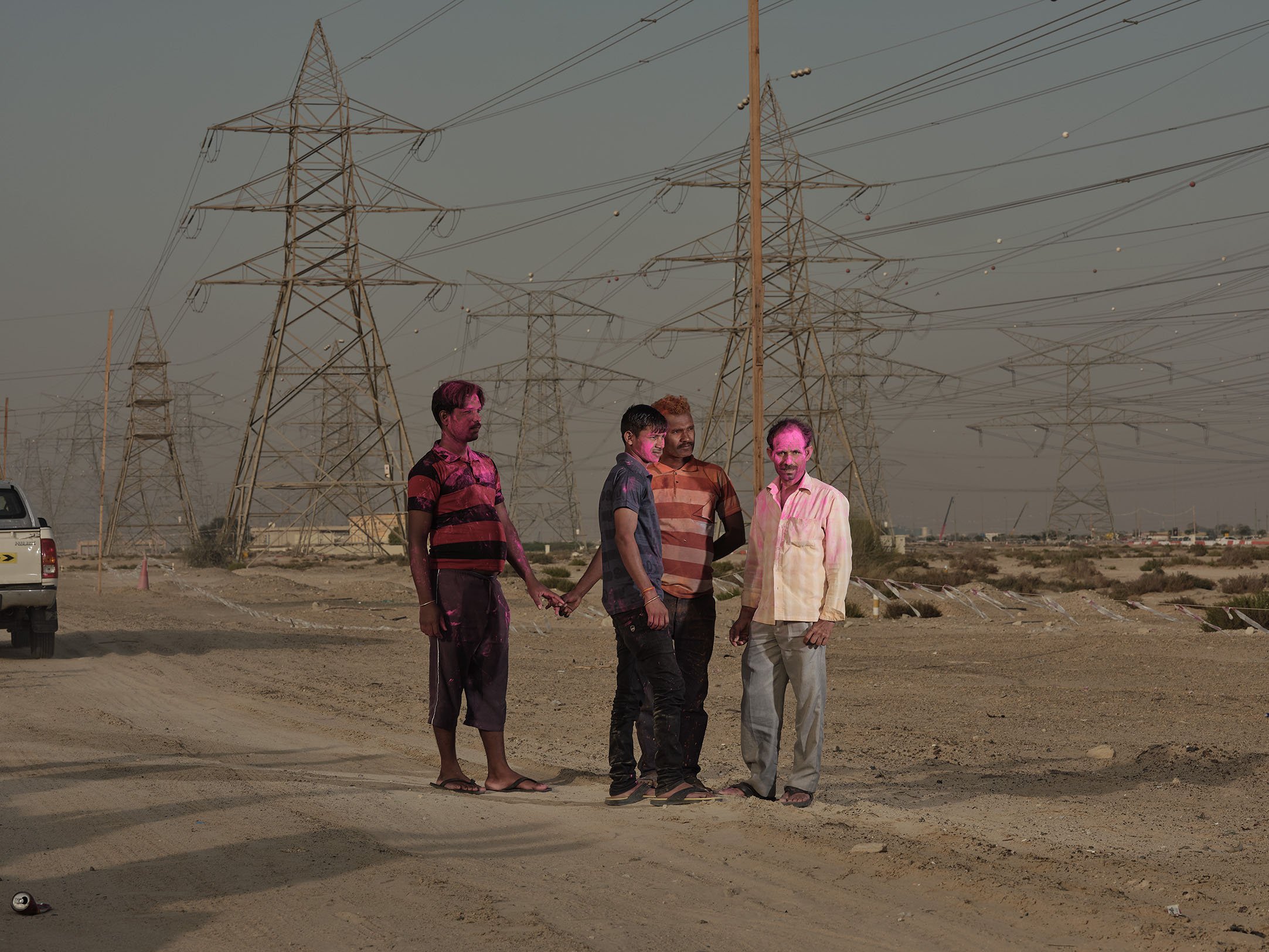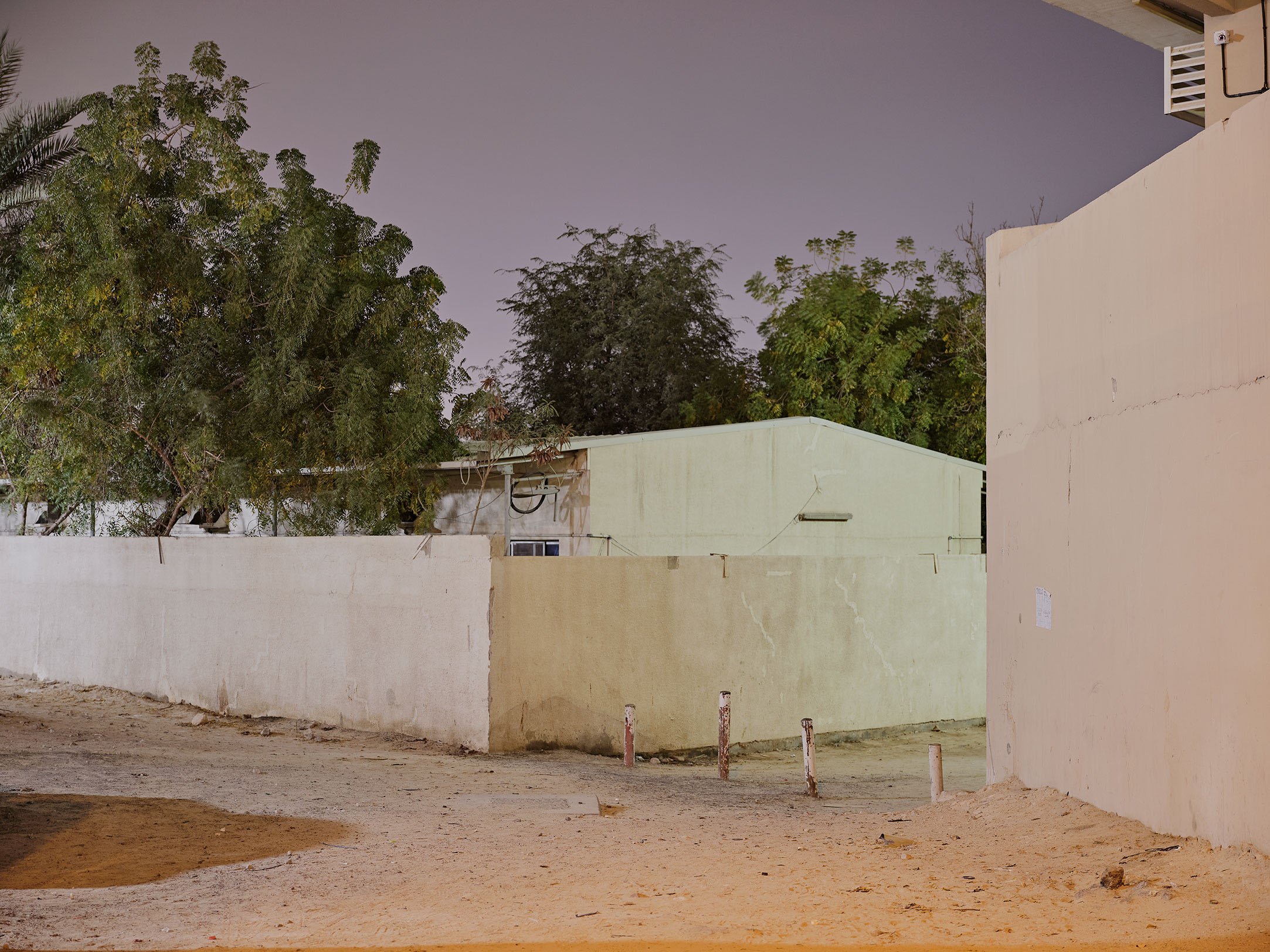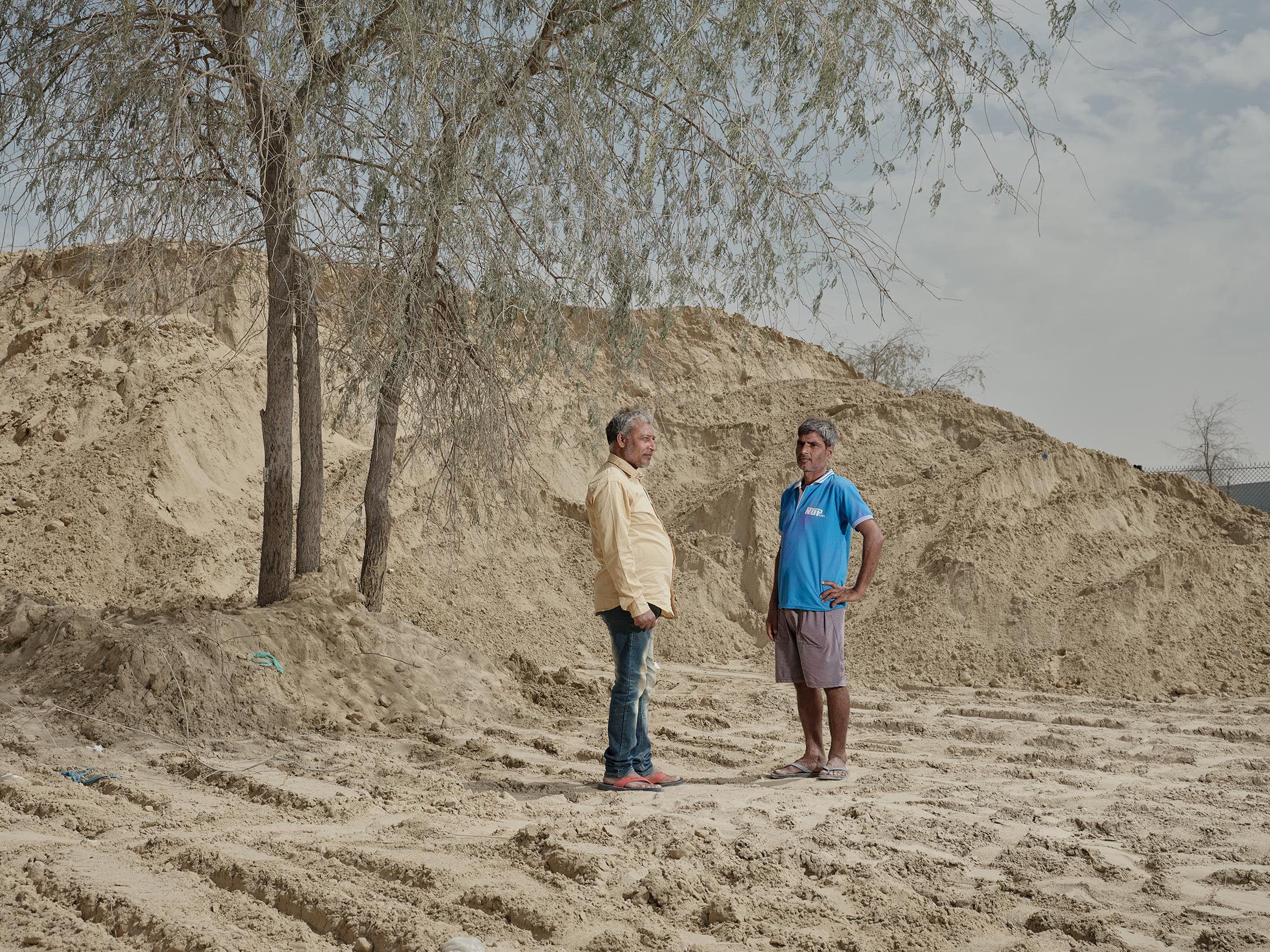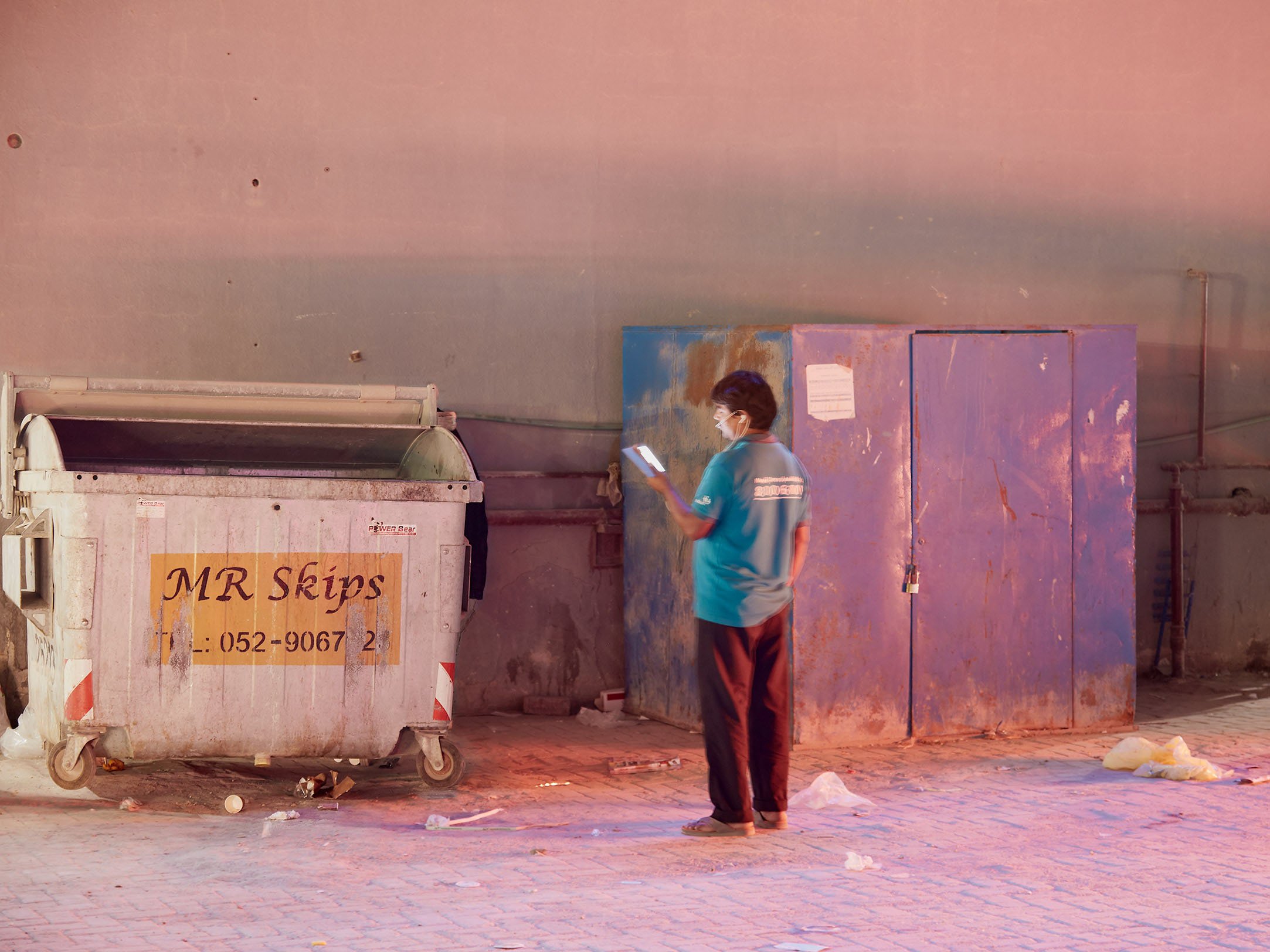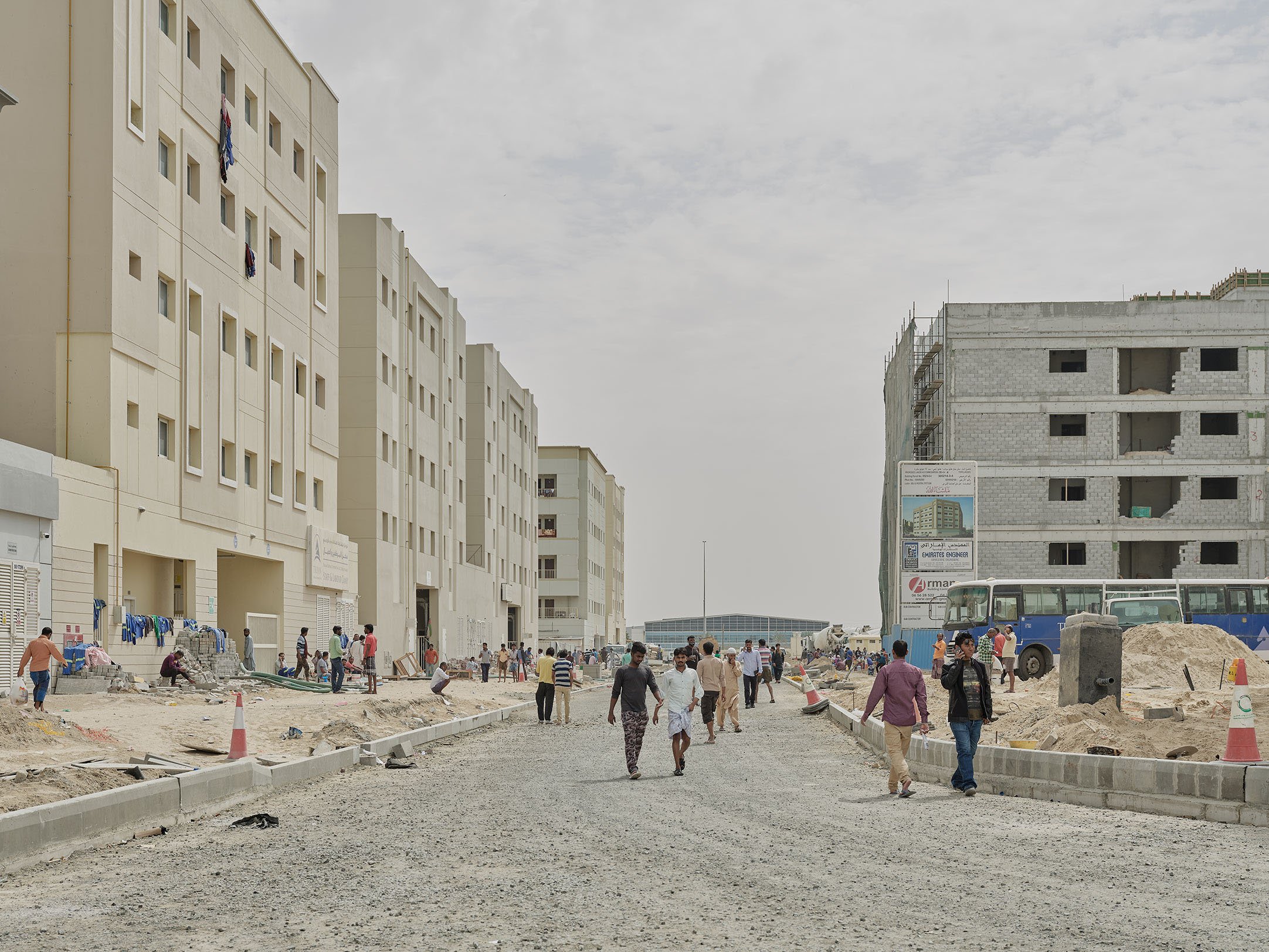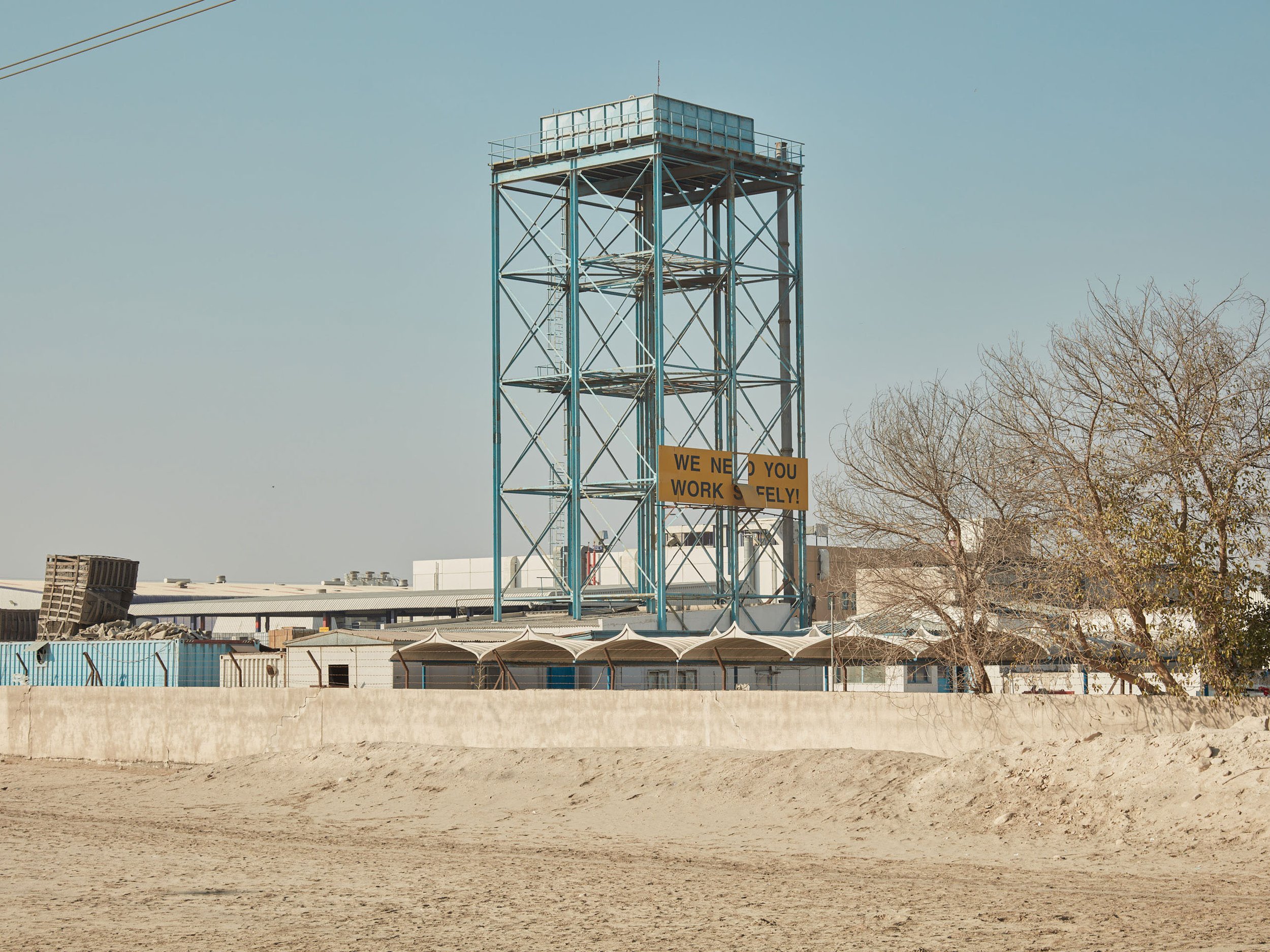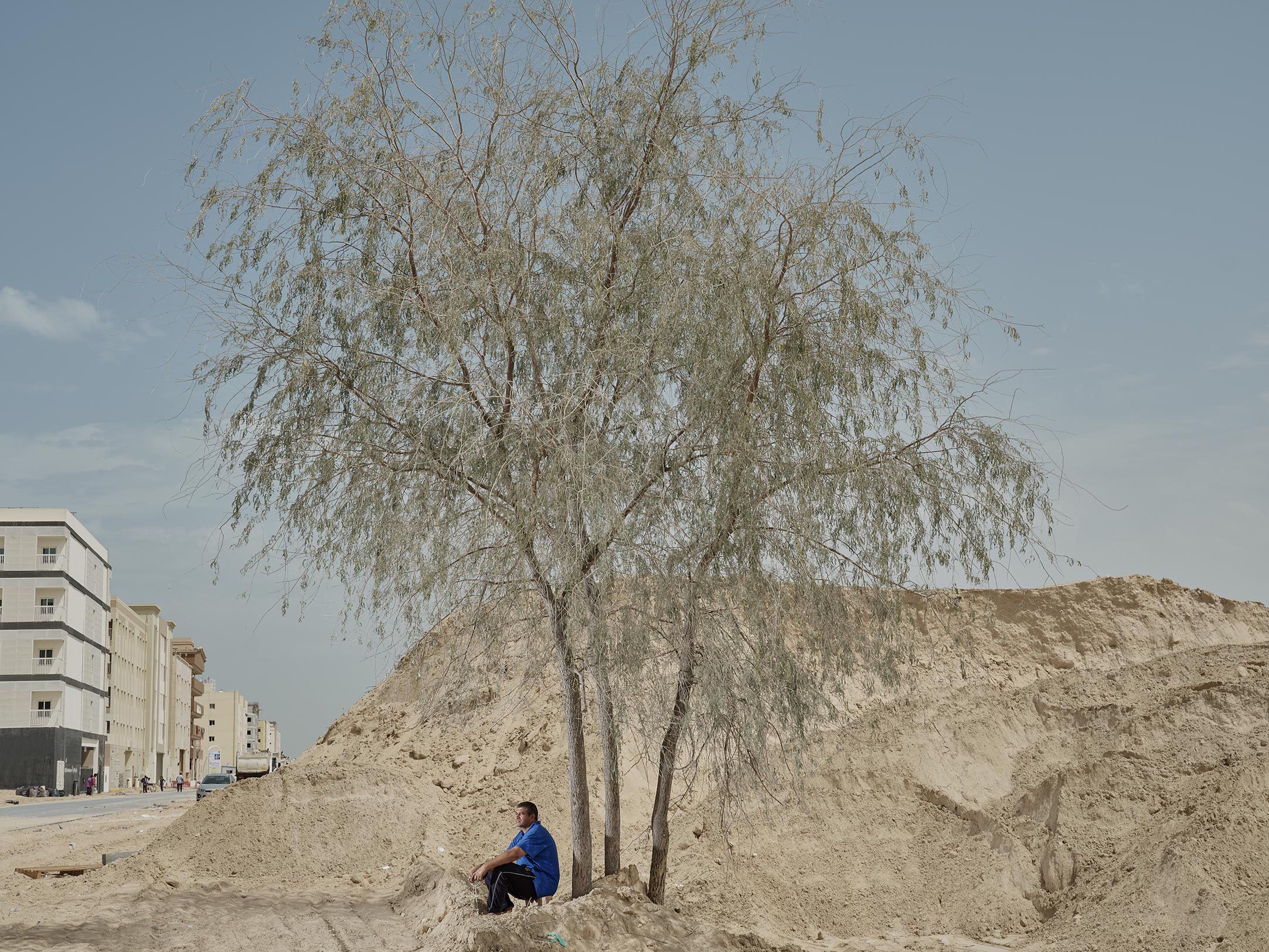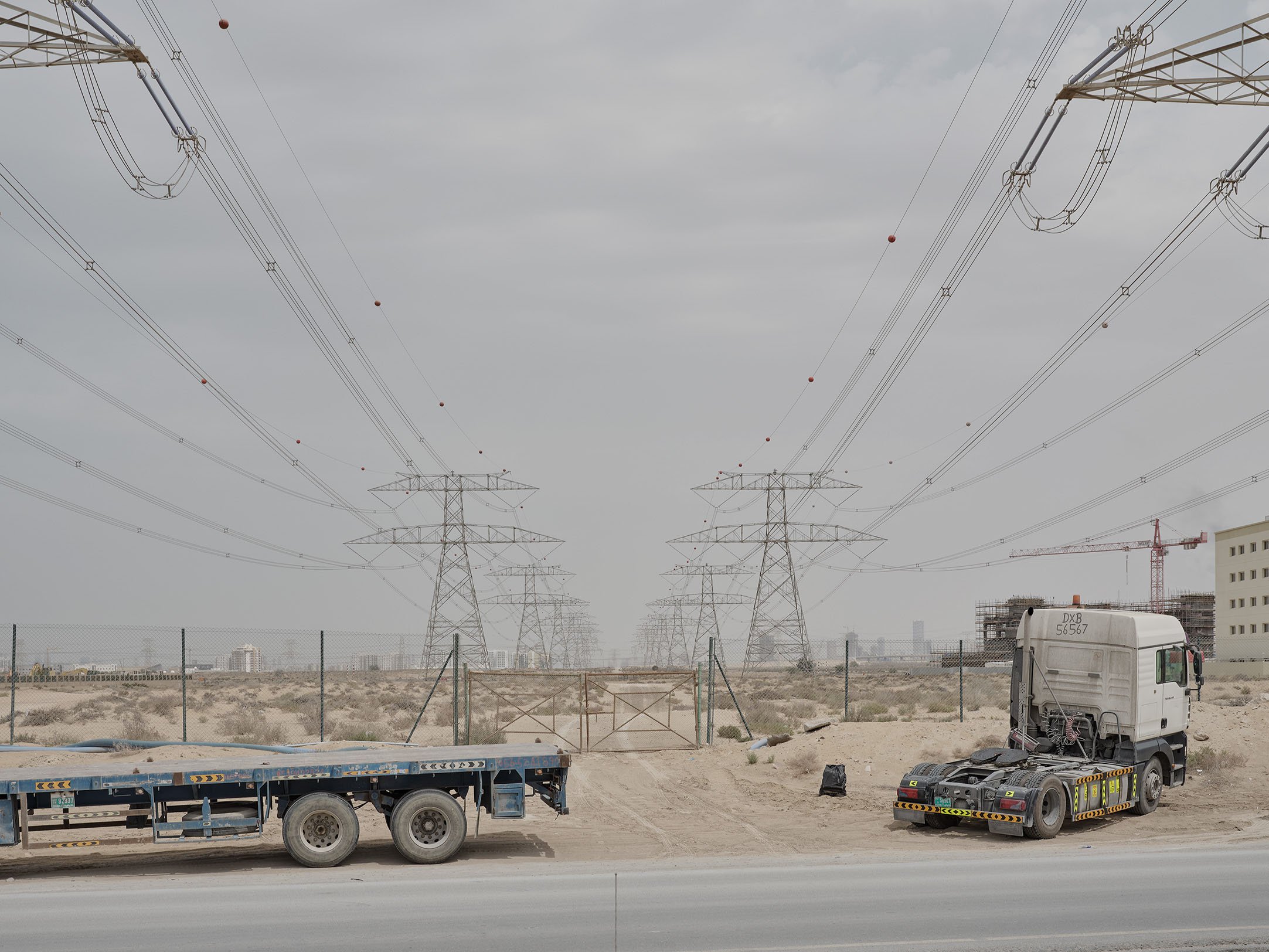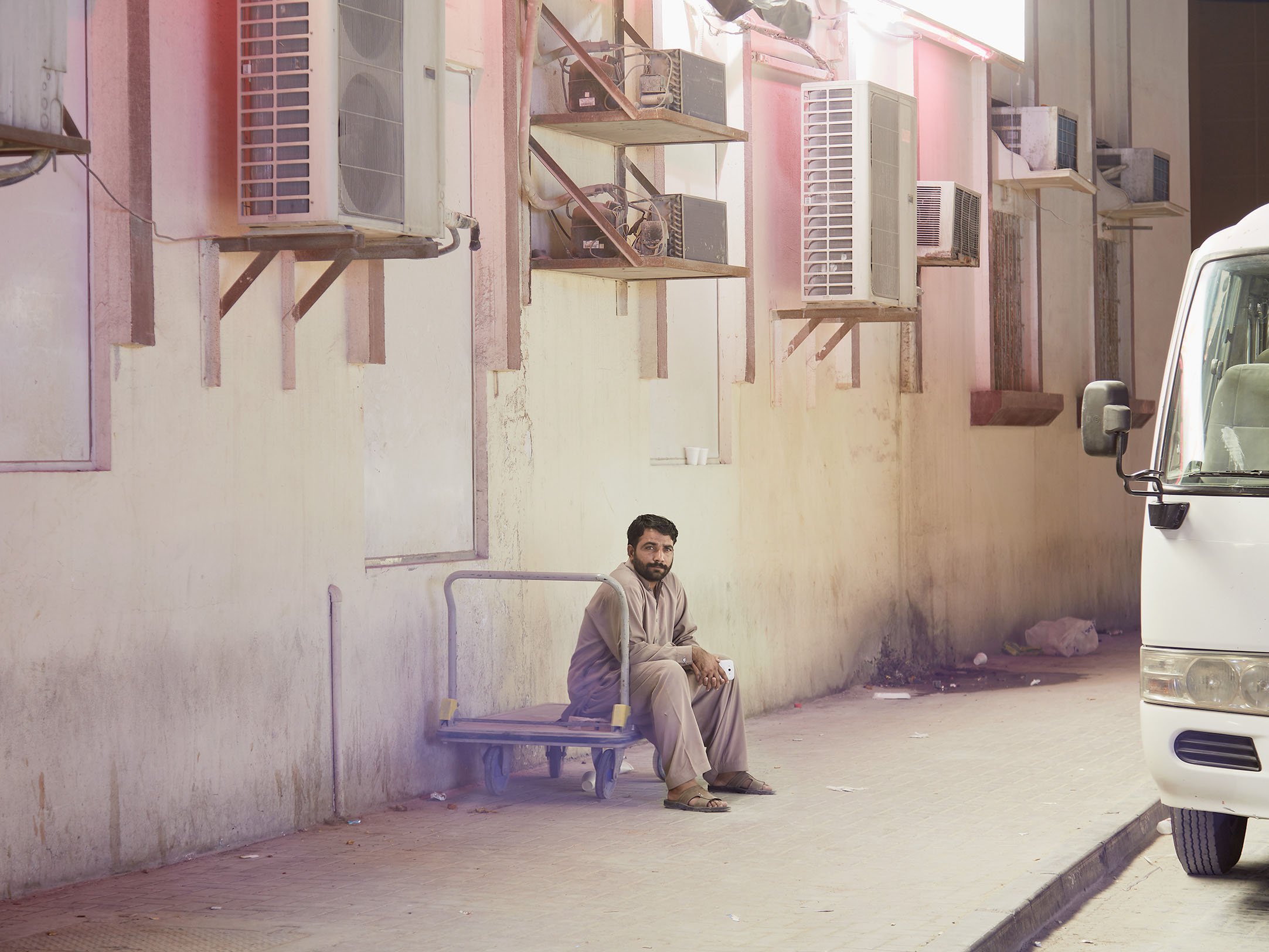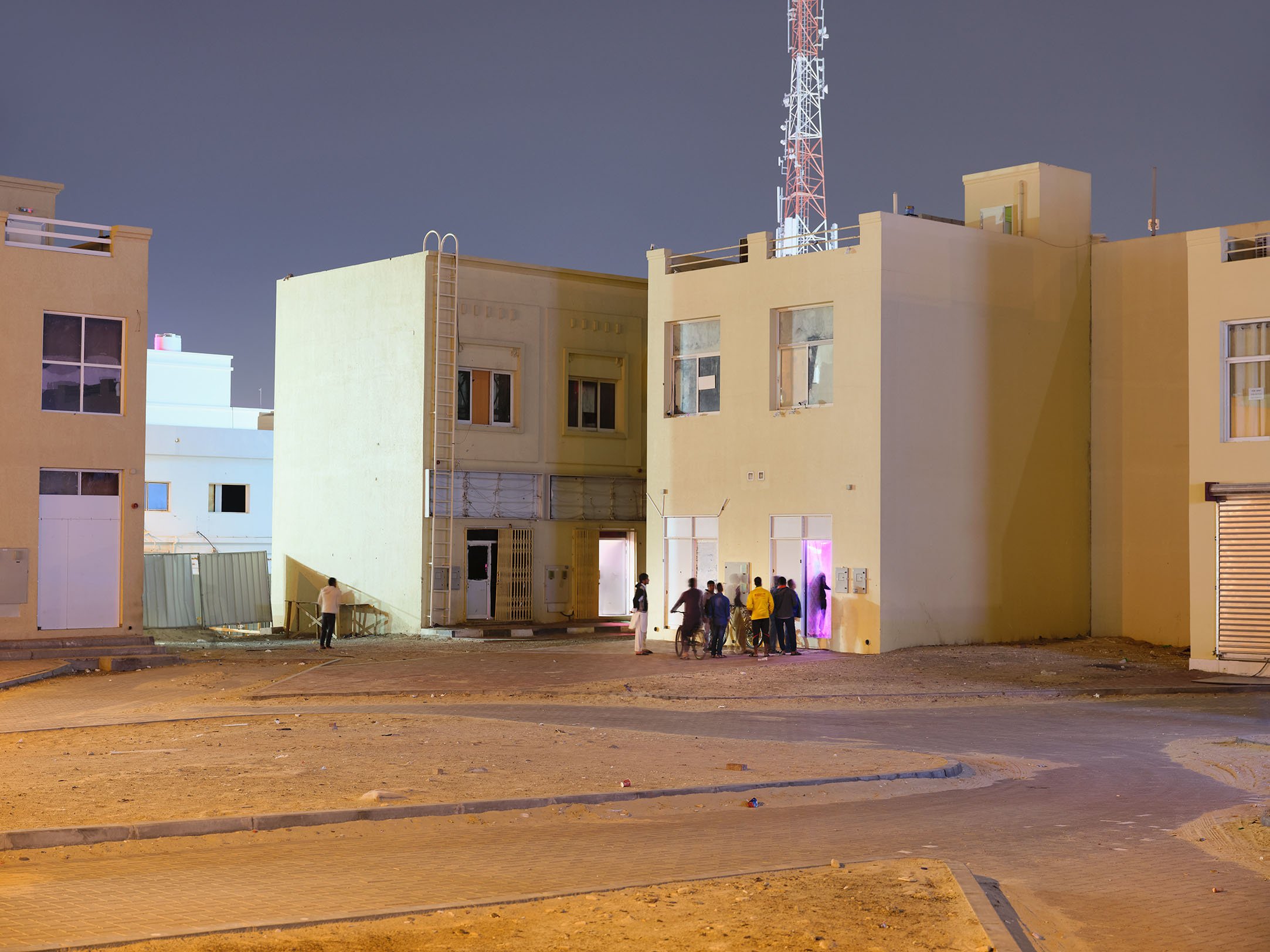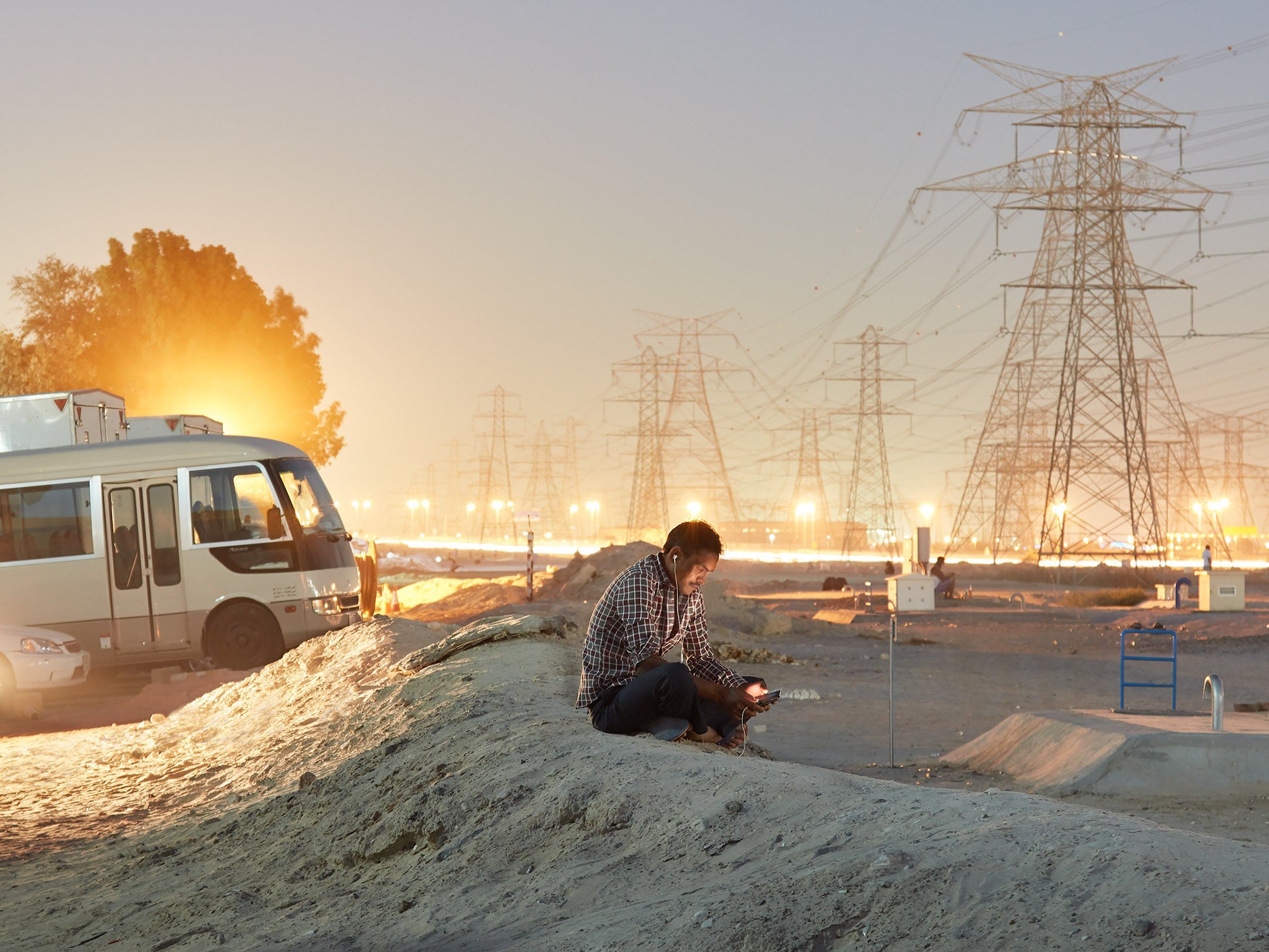The Hands That
Built This City
by Polly Tootal
It’s no doubt that the globalised world has produced new rules and visual cultures. One effect is that many cities start to look the same on the surface once you remove the linguistic markers seen on shopfronts and billboards. Image searching, one of the fastest ways to view these cities from a distance, tends to bring you results sorted by relevance, hiding just as much as it shows. Therefore, it’s important to find art projects that avoid the seductive sleekness of new media to question the seemingly unstoppable urban development in order to show precisely what it takes to build these infrastructures.
The project shows the complexity of living in the liminal space through photographs of men who live in labour camps in the UAE. The labourers, brought in to accommodate Dubai’s high volume of infrastructural development, were enticed with a false promise of prosperity, only to end up earning much less than promised, living eight to a room with no proper plumbing.
Their passports are seized, family visits are forbidden and return visits become too expensive. Their employment a seeming necessity for the creation of such an empire, yet their existence markedly erased. In the promise of utopia, its material and laborious preconditions need to be camouflaged to make it seem like the birth of these cities are inevitable and spontaneous. The workers documented in The Hands That Built This City live in this moment of globalised blindness, filling up the porous spaces in these no-man’s lands, relying on a sense of shared struggle as a form of new social support. The men become extremely protective of one another, as these bonds of friendship become one of the few sources of comfort for these disenfranchised workers. This is neither a romantic tale of resilience nor a dystopian inevitability, but simply a reality that has been camouflaged.
The series, shot over the span of two years, have an unreal, almost theatre-like quality to them despite its documentary core, stemming from Tootal’s conceptual interest in finding the bizarre in the banal. The choice of using directional hard lights in the daytime drives the aesthetic of the series. Neither fiction nor strictly vérité, the series shows us just how strange reality can be, from workers squatting in front of sand dunes underneath a drying tree to a small congregation foregrounding sprawling transmission towers.
The photographer finds herself as the only woman in a sea of men, the theme of masculinity within this shared struggle naturally emerges. What does a society without women and children look like? What sort of relationships emerges between the men? These are questions that are not answered by photographs, for they cannot speak, but are those that are catalysed by the project. The series reflects the precarious existence of what is essentially a complex system of modern slavery that not only exists on the economic plane but seeps into gender, culture, race and migration.
